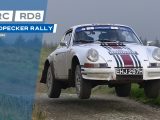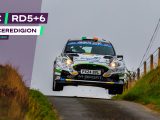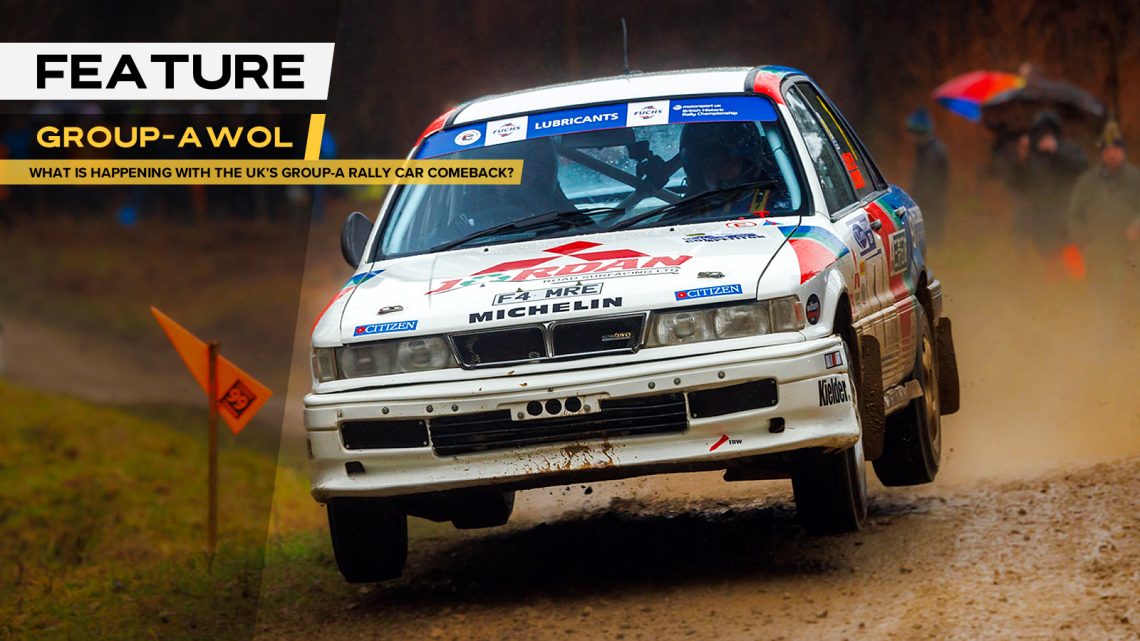
FEATURE / GROUP-AWOL
30/09/2024WORDS BY ANDY COOK | PHOTOGRAPHY BY ANDY COOK, ANDREW SCOTT & LAT/MOTORSPORT IMAGES
It’s February 2024 in North Yorkshire, and the opening round of the 2024 Motorsport UK, FUCHS Lubricants, British Historic Rally Championship is being hosted by the Riponian Rally.
On the entry list and bringing a touch of nostalgia back to a different generation of rally fans, were four Group A machines all registered for Category 4b, and this generated a fair amount of buzz and excitement about this homologated Group of cars making their mark on British rallying this year. Their appearance would also spark speculation that they could perhaps also encourage more to come out of the woodwork and Special Stage Rally TV front-man, Paul Woodford likened all this to something of a bit of a “renaissance” in British Rallying.
By the mid-eighties, Group B was deemed too dangerous following the deaths of Henri Toivonen and his Co-Driver in 1986 in Corsica. It was time for rallying to stop the madness, re-invent itself, and regroup, and so Group A was born.
The Group A cars were in effect modified road-going cars, often the ideal choice from a manufacturer would have been a four-wheel drive, turbocharged version, beefed up to deliver more power and torque. But initially, it was a bit of a letdown, the cars were slower and not as dramatic nor as exciting to watch out on the stages compared to the Group B monsters; yet the fans could relate to them more easily because they closely followed the showroom examples.
Within a year or so, most cars had reached around the 400HP mark, they would soon get up to speed and were beating the stage times of the Group B cars. The focus of development would also turn to the tyres, the suspension, and the chassis; with the drivers also beginning to look at racing lines. The drivers who were smooth and could follow the racing lines, were the ones to carry the speed in the stages, which was vastly different from the aggressive sideways nature of Group B. With their more modern trick suspension and the development of tyres; the handling was also far superior, but more importantly, they were significantly safer than the Group B cars.
Lancia would be the team to hit the ground running with the platform and would dominate from 87 through a number of years into the early nineties with its Delta Integrale. With their combination of great engineers and strong drivers which were well managed, they had the measure of everyone right from the first season in 1987. They also had a win-at-all-cost mentality, even if it did mean interpreting the rules slightly differently from everyone else, they were, therefore, a force to be reckoned with in the early years of Group A, winning with Juha Kankkunen in 87 & 91, Miki Biasion in 88 & 89 and Carlos Sainz in 90 & 92.
WHAT HAPPENED TO THE UK’S GROUP-A RALLY CAR COMEBACK?
Seeded at car number 1, at the Riponian Rally, was the stunningly presented Mitsubishi Gallant VR-4, piloted by the young and talented George Lepley. Lepley would also be joined at the opening round of the year by Barry Jordon in a similar Gallant, along with Keven Procter in his Ford Sierra Sapphire 4×4 and Christina Robinson in a Subaru Legacy RS.
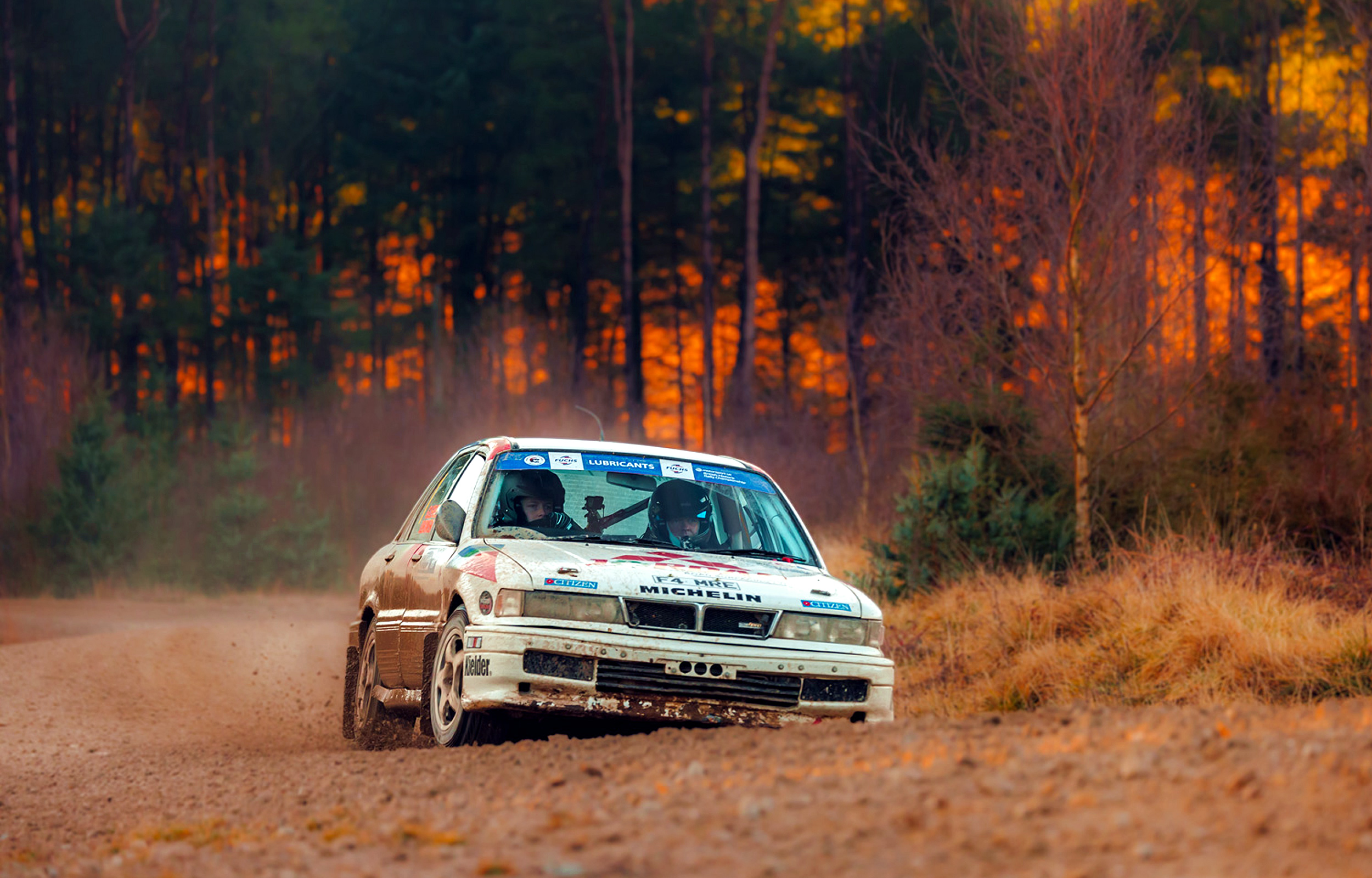
Photo: George Lepley & Dale Bowen – Riponian Rally 2024 | By Andrew Scott
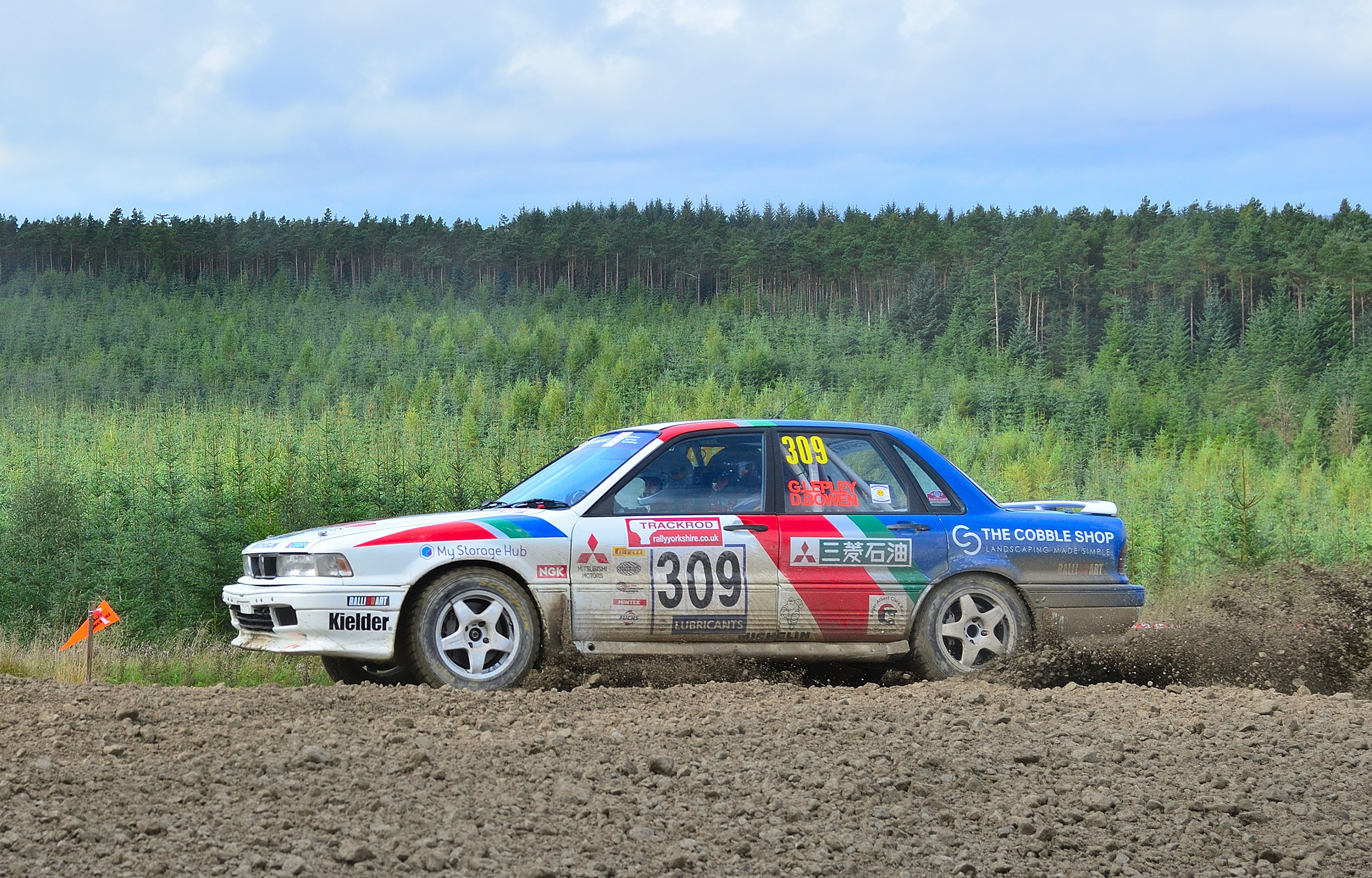
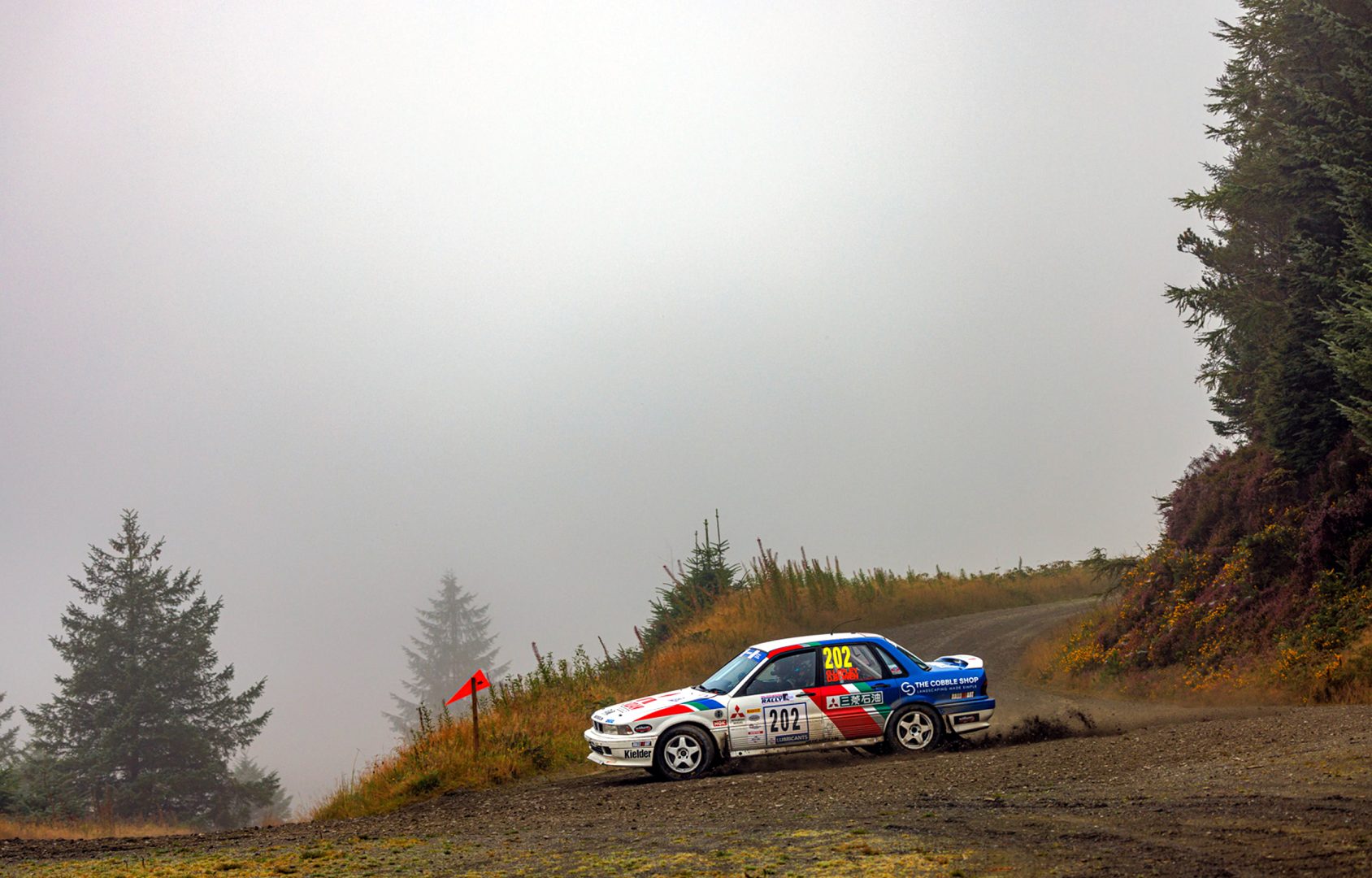
Photos: George Lepley & Dale Bowen | Left: TrackRod Rally 2023 – By Andy Cook (Xlerate.Media) | Right: Woodpecker Rally 2024 – By Andy Scott
Of the two Gallants, Lepley’s is perhaps a more common sight out on the British stages, having first broke cover at the 2022 Goodwood Festival of Speed. The young rally driver also had several previous outings at the Woodpecker, TrackRod and Malton Forest rallies in 2023. This year (at the time of writing), Lepley would only contest three rounds of the BHRC, The Riponian, Rally North Wales and The Woodpecker, failing to finish on two of them. Jordon’s Gallant would make its debut on the Riponian but sadly we would not see him take to a rally stage in it since.
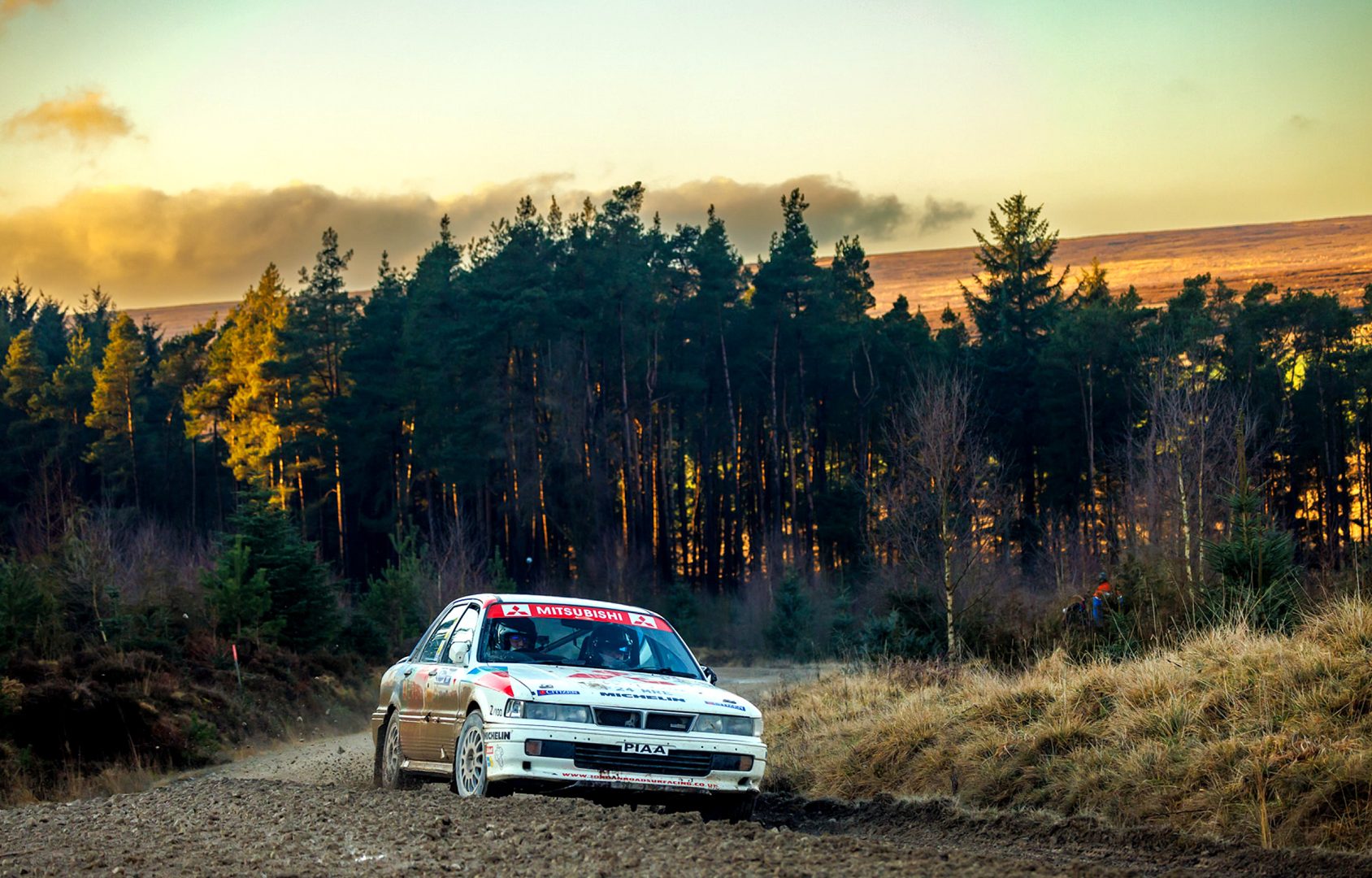
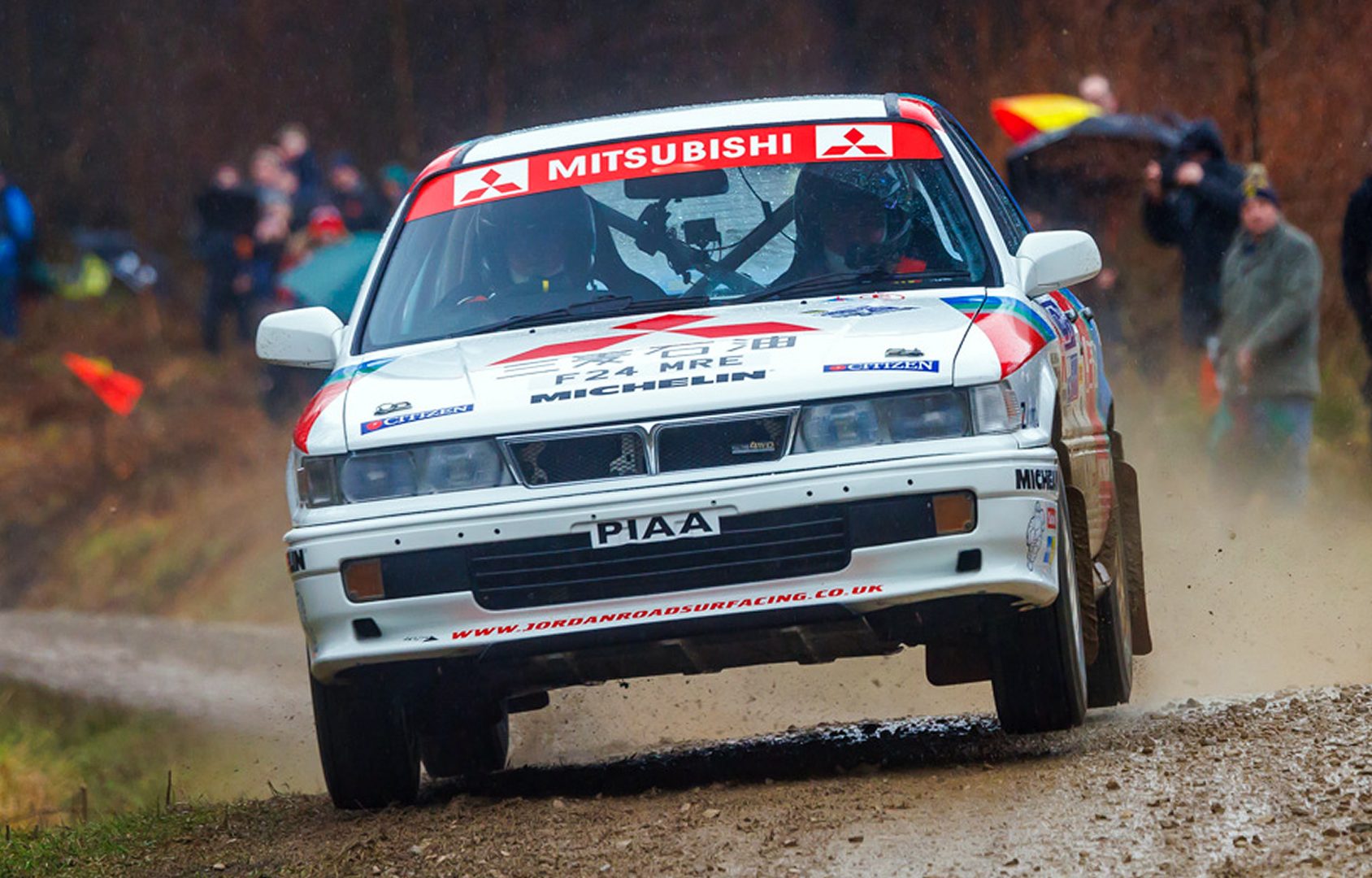
Photos: Barry Jordan & Arwell Jenkins – Riponian Rally 2024 | By Andrew Scott
We have also seen Kevin Procter’s Sierra out a bit in 2023, notably the Roger Albert Clark Rally when he rolled out of the event on day 4; as well as a handful of events in the run-up to the RAC. In addition to the Riponian, Proctor would also tackle the second round, Rally North Wales, but would retire from the event on the fifth stage in Gartheiniog Forest.
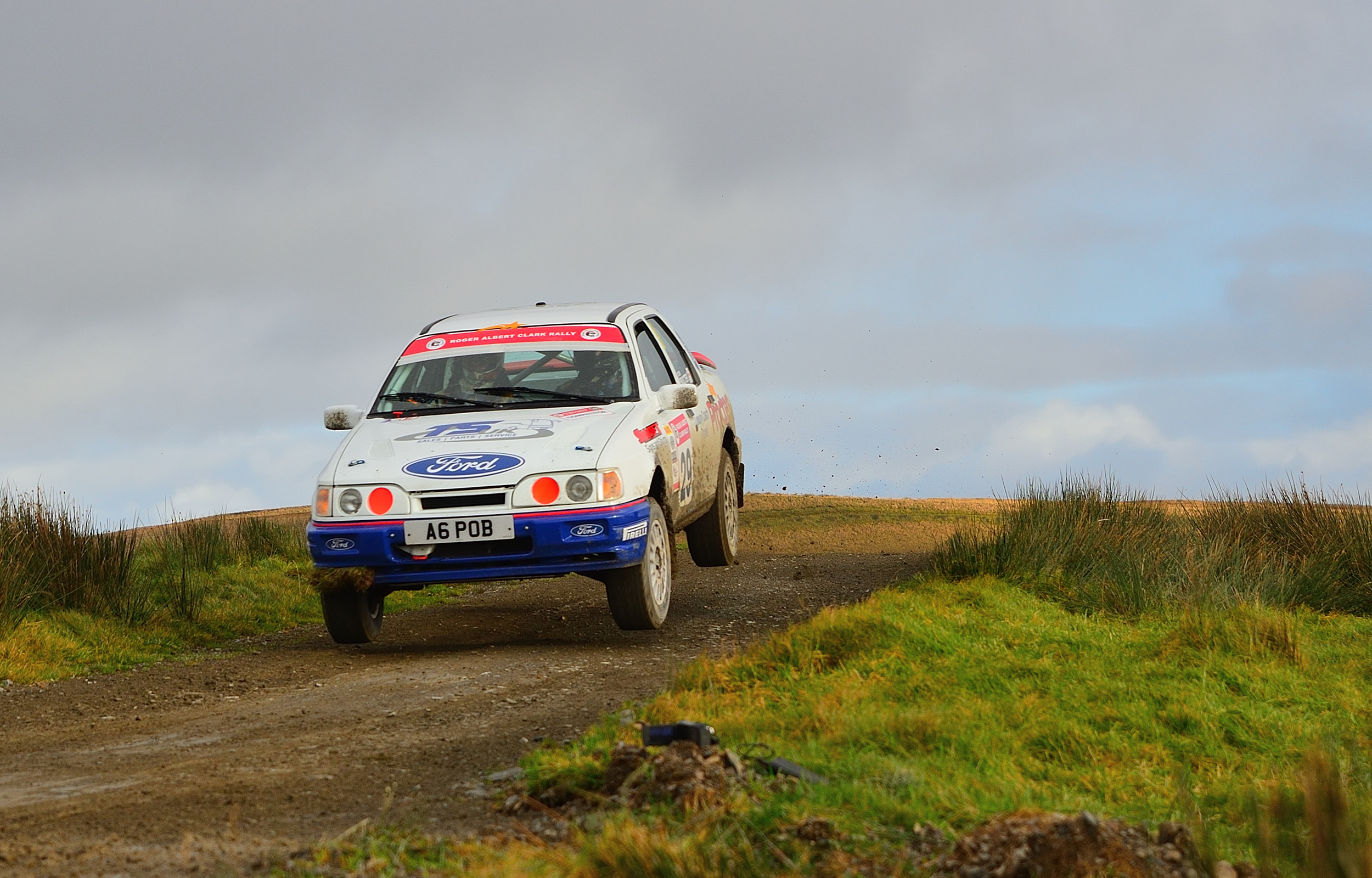
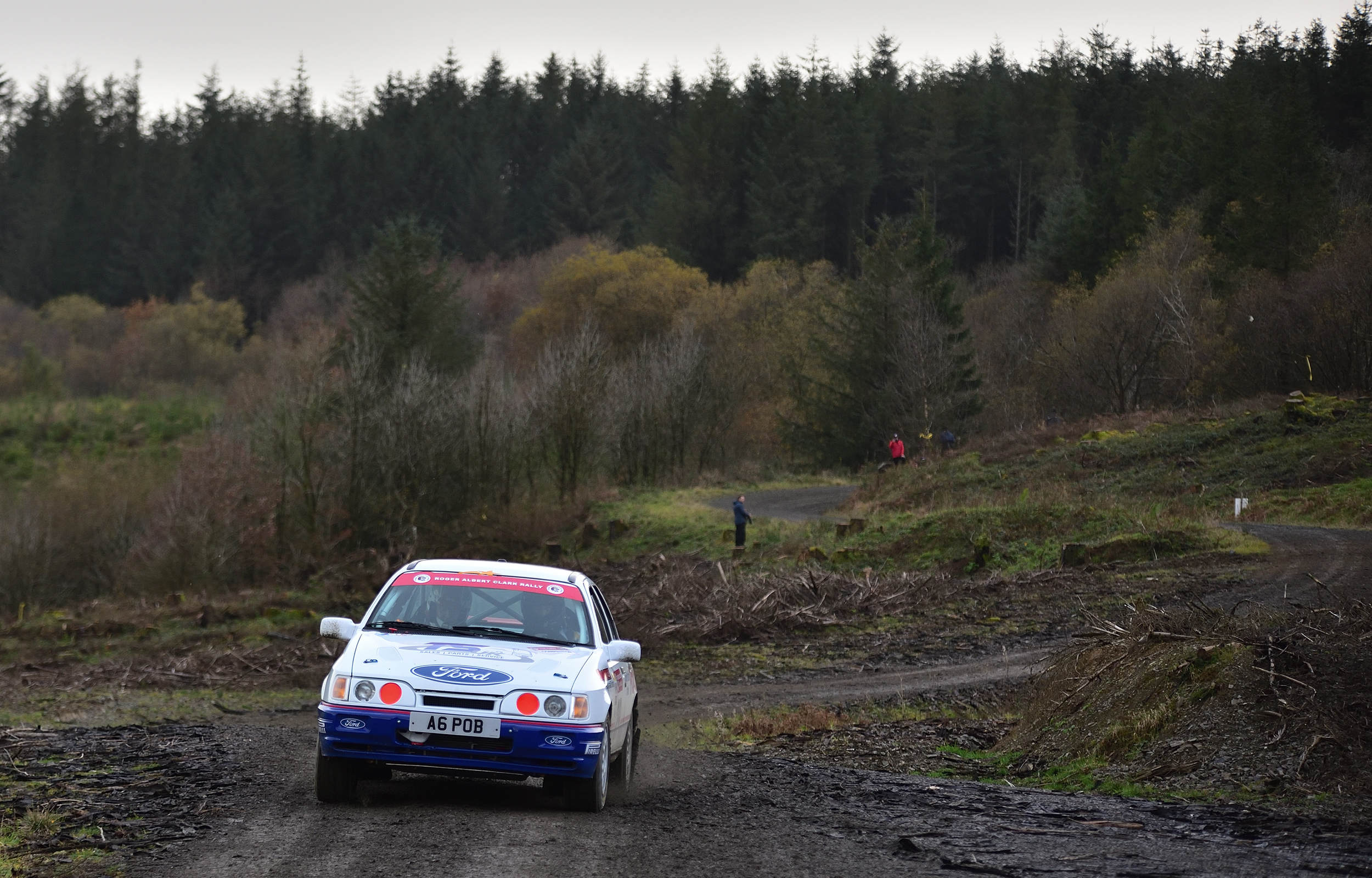
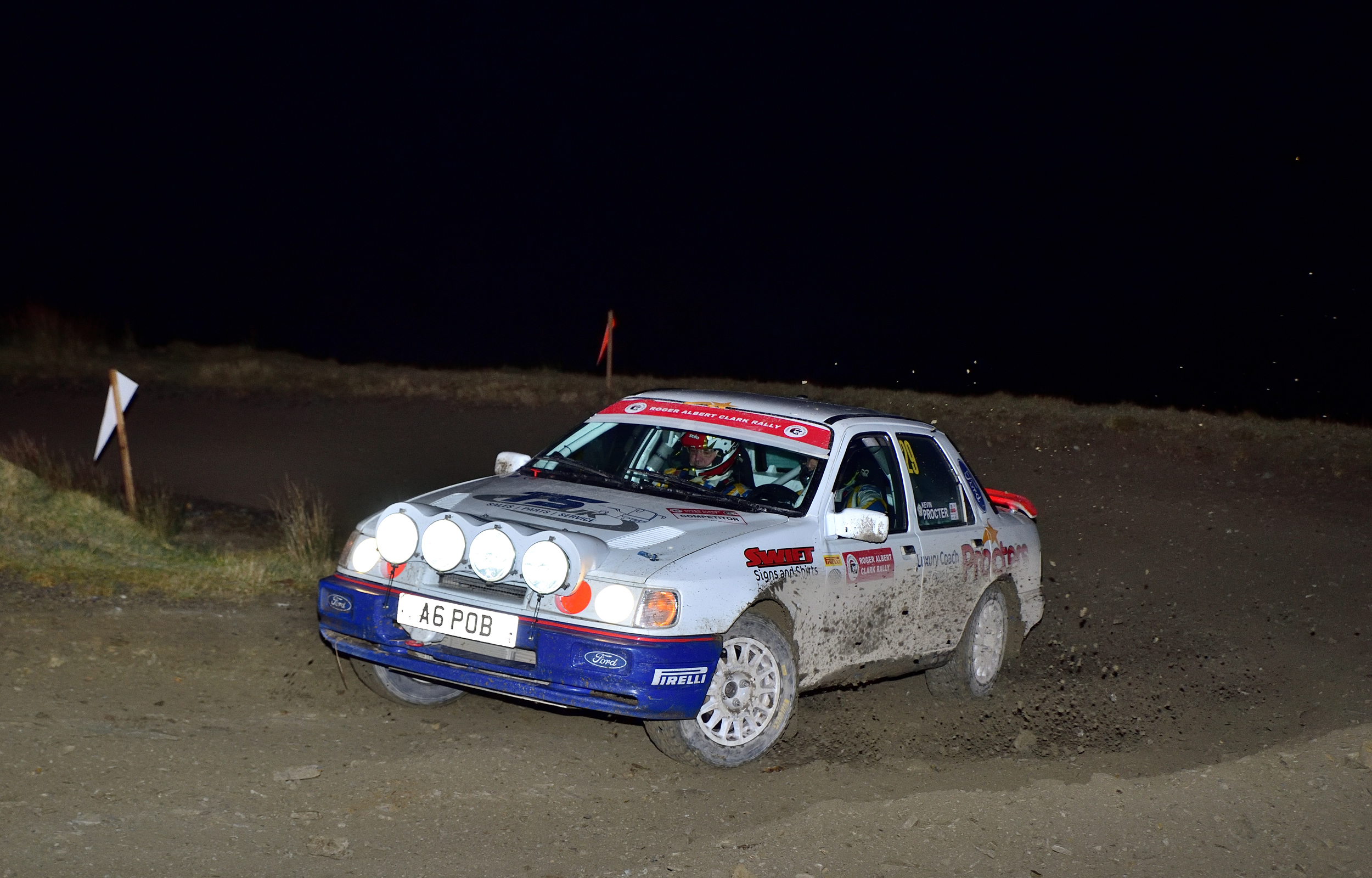
Photos: Kevin Proctor & Jamie Edwards – Roger Albert Clark Rally 2023 | By Andy Cook (Xlerate.Media)
The Subaru Legacy RS of Robinson first hit the stages at the Malton Forest Rally in 2023 and this year’s Riponian would see Christina register for the BHRC at the eleventh hour, she has continued to use the machine throughout the year. With appearances on the Border Counties, Kielder Forest, Greystokes and The Scottish, it has perhaps seen the most stage miles out of them all. Robinson would also return to grace the BHRC on the TrackRod Rally Yorkshire at the end of September, but sadly was a loan competitor in the Category as Lepley was un able to enter due to lead times on replacements Diff parts following his DNF on the previous round, the Woodpecker.
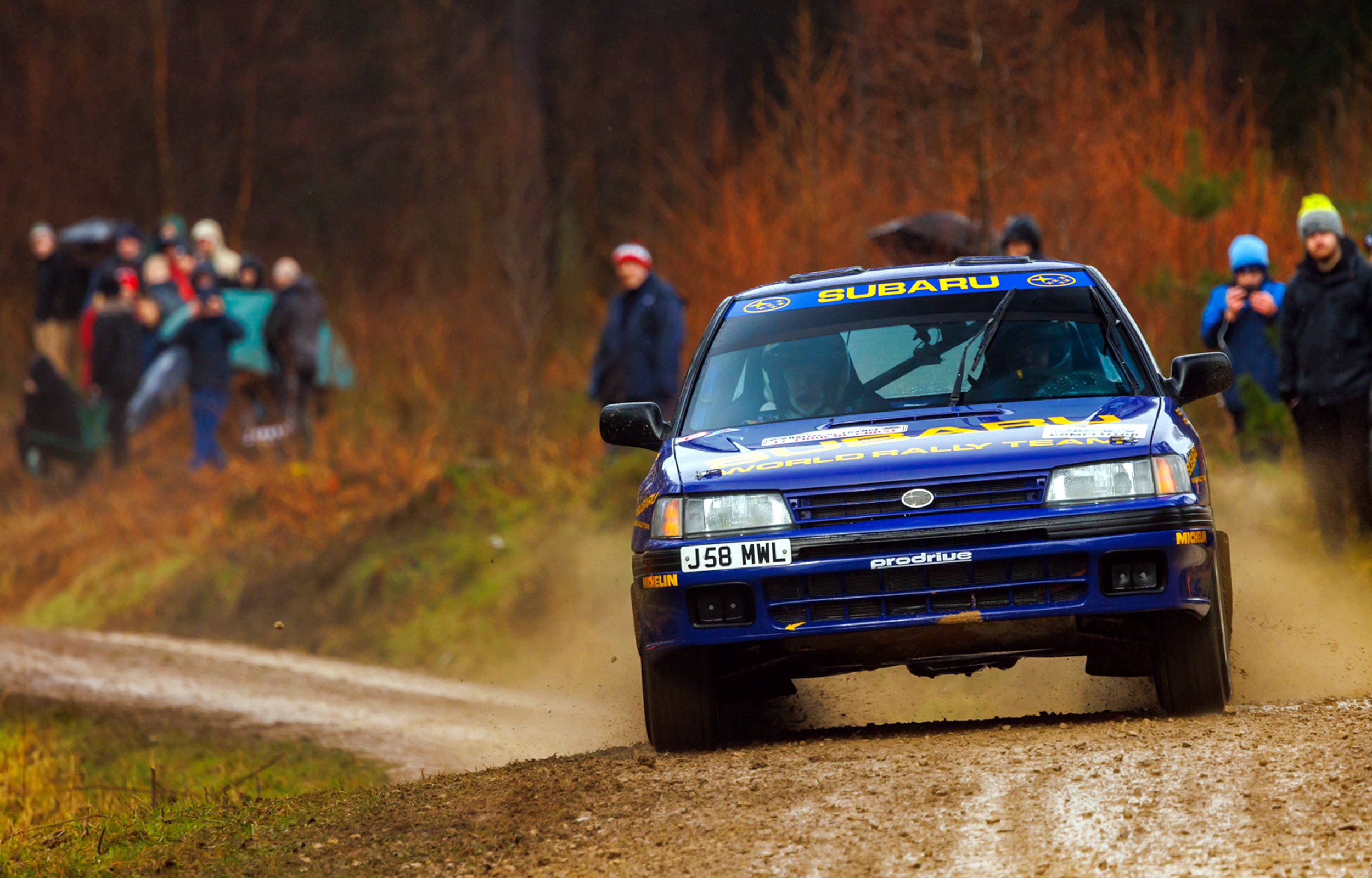
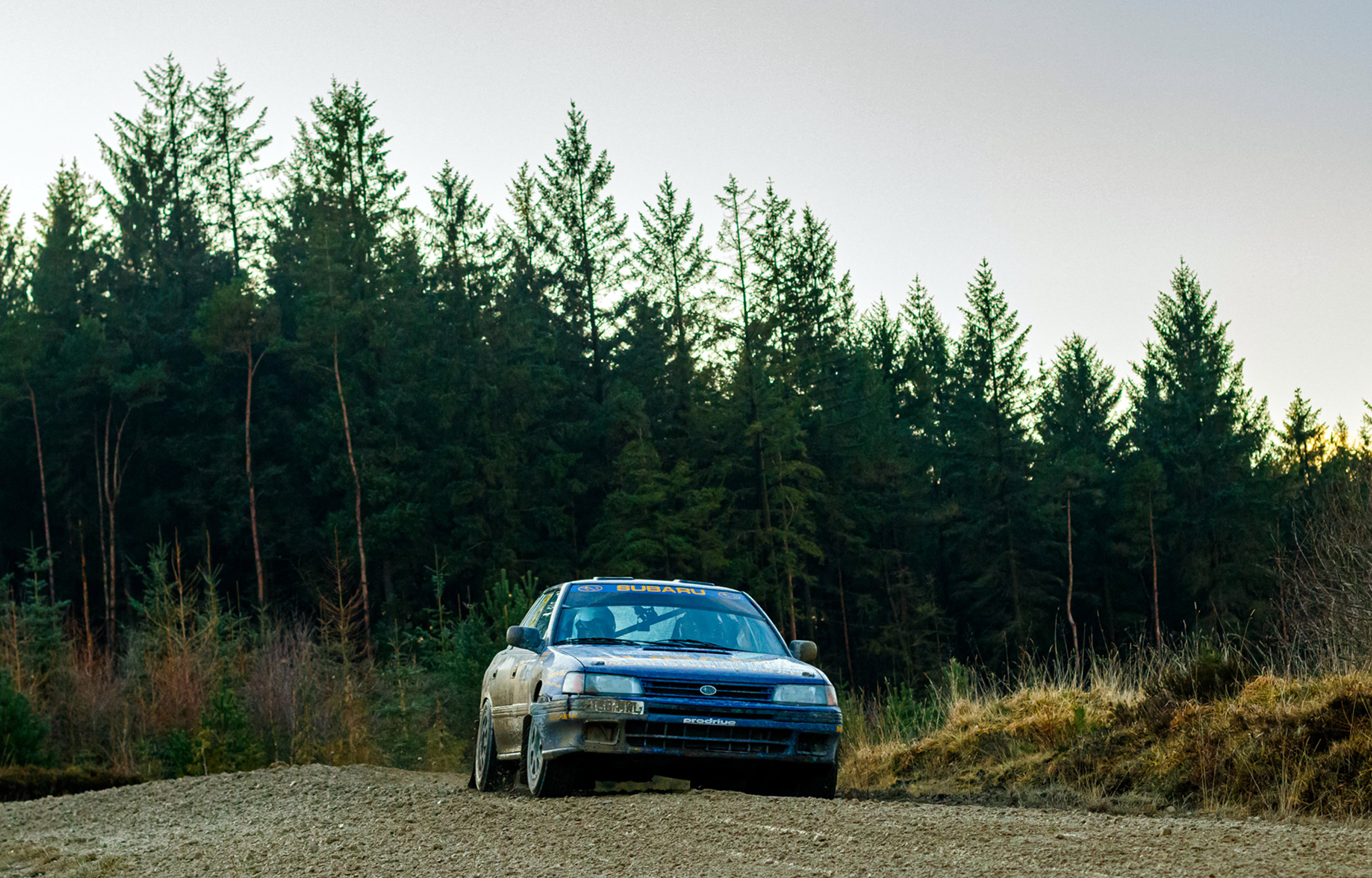
Photos: Christina Robinson & Kim Gray – Riponian Rally 2024 | By Andrew Scott
Touching on last year’s Roger Albert Clark Rally, we did also see Darren Martin out in a Subaru Legacy RS, along with Aaron McClue in a Peugeot 205 GTi and James Brady in a Porsche 911 Carrera, so there are a few more examples of this type of rally car floating about.
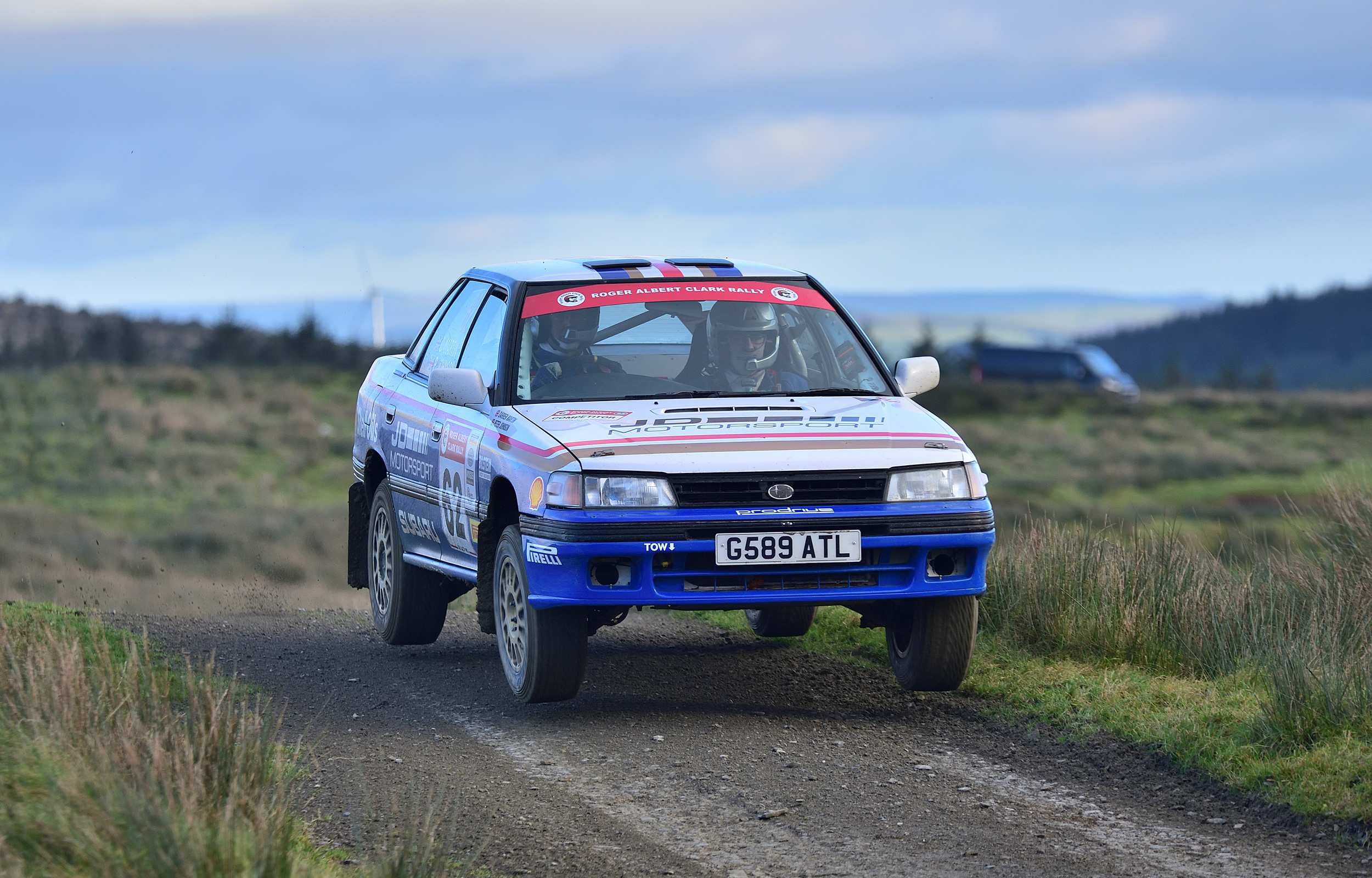
Photo: Darren Martin & Peter Johnson – Roger Albert Clark Rally 2023 | By Andy Cook (Xlerate.Media)
Ahead of the 2024 season, at the Autosport Show, Xlerate spoke with British Historic Rally Championship manager, Colin Heppenstall about this subject, here’s what he had to say:
“What we’ve said as a championship is, once we get half a dozen competitors regularly competing in these cars, we’ll look at bringing them into the Championship. At the moment it is a category on their own, they can’t win the Championship, but they can win the rallies.
Once there are half a dozen it makes it worthwhile. It would be unfair to the likes of George as well, saying you can win the Championship overall when you’re the only one and just run away and win it, because it would be unfair on everyone else and unfair on him, it’s not the right thing to do.”
“There are some (of these cars) out there, Baz Jordan’s got a Gallant and he’s using it on the Riponian, Matt Robinsons got a legacy which his wife is using at the moment on a few events, Procter has got the Sierra of course, so there are people who are now out there and have started to use them, we just need them to continue to use them to bring them into a Championship.”
“I’ve been open with everyone I’ve spoken with, as long as I can see up to half a dozen on a regular basis coming out, then we’ll bring them into the Championship, if we see that during 2024 then great, or if not hopefully 2025 might be the year.”
WHAT HAPPENED TO THE UK’S GROUP-A RALLY CAR COMEBACK?
However, we have not seen a meaningful Championship campaign from any of these cars this year, so has all that initial hype fizzled out and fallen short of the British rallying communities’ expectations? or will we simply have to be patient and wait?
Of course, when one considers Group-A rallying machinery, there is a plethora to choose from, not just the offerings from Ford, Mitsubishi or Subaru, but also Alfa, Audi, Lancia, Mazda, Nissan, Opel, Peugeot, Renault, Saab, Skoda, Toyota and Volkswagen are all represented well.
For anyone considering going down the route of any of the three specific examples of Group A cars as seen in the BHRC this year, we have compiled a small nugget of background history about these machines and how they arrived on the World Rallying scene back in the eighties and nineties.
THE MITSUBISHI GALLANT
Japanese manufacturer, Mitsubishi Motors launched the GALANT in 1987, and in 1988, set out to take up the challenge of the World Rally Championship for the first time in five years. They did this by forming two teams: the Works team, which contested the European rounds of the World Rally Championship (WRC), and the Semi-Works team, which competed mainly in the Asia-Pacific Rally Championship (APRC).
The GALANT VR-4’s debut was in 1988 at Rally New Zealand, where Kenjiro Shinozuka took part in the rally within the semi-works team. Shinozuka also won events in Malaysia and Australia and went on to win the final Asia-Pacific Rally Championship (APRC) round, the Himalayan Rally, to become the very first champion of the newly created APRC.
Photos: Ariv Vatanen & Bruno Berglund – RAC Rally 1988 | Credit: LAT/Motorsport Images
Meanwhile, over in Europe, the WRC Works team, RALLIART took the Gallant to the final round of the World Rally Championship, the RAC Rally of Great Britain. Mitsubishi also took the age-old advice of, if you want to win, hire a Fin, and so Ari Vatanen joined the team as their number one driver. However, win they did not, the car ended up retiring with engine failure on the fourth day of the event, but it did set the fastest time in two of the special stages, SS20 Clocaenog Forest, Wales and again in Scotland SS32 Twiglees, demonstrating its potential.
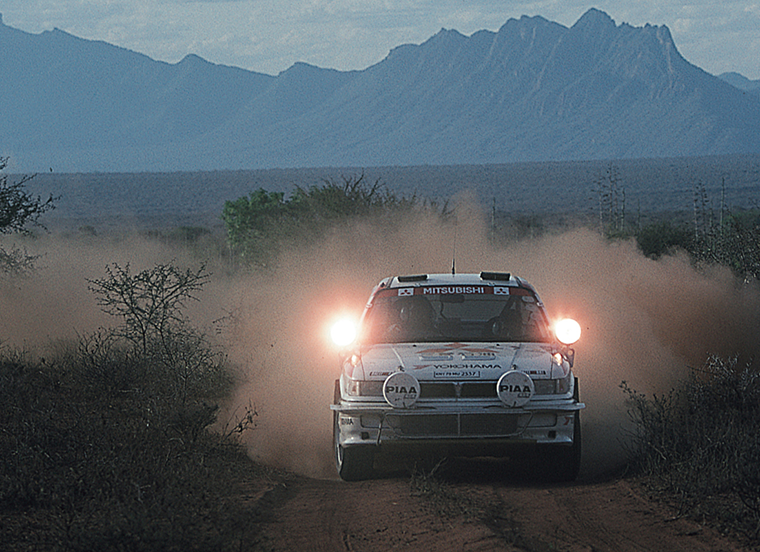
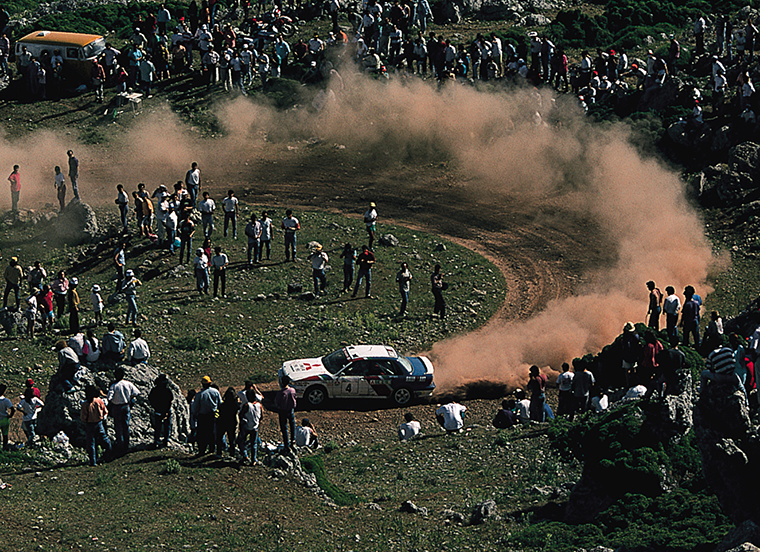
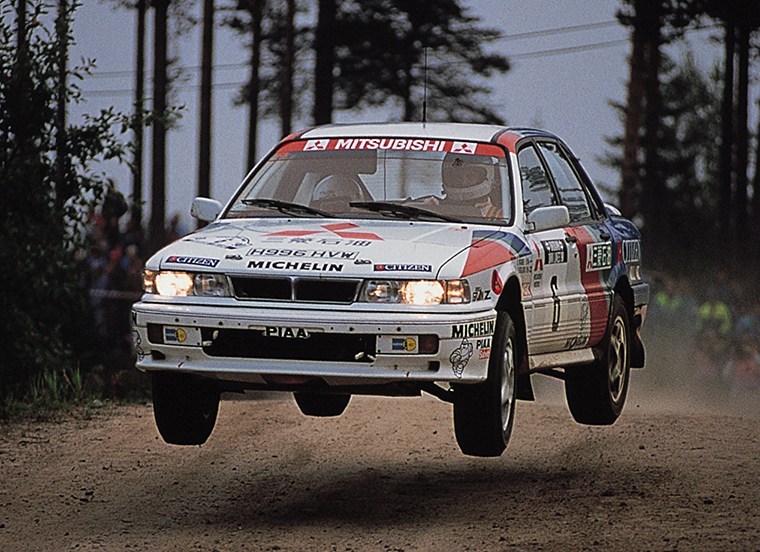
Photos Source: Mitsubishi Motors
Entrusting the second car to the most suitable drivers, it would actually be Michael Ericsson who would take the Galant to its first win on the Rally of 1000 Lakes in Finland the following year. Pentti Airikkala would also follow that up with a victory at the 89 RAC Rally with Vatanen finishing fifth; this was a huge success for the team who won, two out of the four rallies that they entered that year.
In 1990, following several successful upgrades to the Gallant, the team would hold third in the Manufacturer’s Championship and again the following year, when Mitsubishi would introduce the Evolution of the Galant-based Group-A car. Shinozuka also became the first Japanese driver to win a round of the World Rally Championship at the Rally of Ivory Coast in the Gallant.
THE FORD SIERRA SAPPHIRE
Although the Ford Sierra Sapphire RS Cosworth 4×4 made a few appearances as a works car in 1990 with Pentti Airikkala in the pilots seat, for example The Rally of 1000 Lakes (retired with Gearbox failure on SS4), Sanremo (finished 11th) and The Lombard RAC (rolled on SS16), it wasn’t until the following year that it would undergo a fuller World Championship programme in 1991 and again in 1992. Sadly, for Ford, the mark was not a particularly successful one in the World of rallying for them. Having never won a World Rally, it would not even come close to emulating the success that Ford had throughout the seventies and eighties with the MK1 and MKII Escorts of the time with pilots such as Roger Clark.
Photo: François Delecour & Daniel Grataloup – RAC Rally 1991 | Credit: LAT/Motorsport Images
In the hands of drivers such as François Delecour and Massimo Biasion, the Ford Sierra Sapphire RS Cosworth 4×4, did, however, take home several second and third places, but its reliability issues, particularly with the gearbox would prevent the car from delivering consistent results. By 1992 such reliability problems had been pretty much ironed out, but the car was never quite on the money in all conditions compared to some of its rivals. A relatively large car, it was heavy, and also a less sophisticated machine at that, compared to, for example the latter versions of the Lancia Delta and Toyota Celica that Ford was pitching it up against. By the end of the 92 season, Ford’s development of the Sierra had come to an end, with the efforts then turned towards the upcoming 93 season with the new Escort Cosworth, which would offer up greater hopes, expectations and potential.
THE SUBARU LEGACY
Developed by British outfit Prodrive, Subaru’s Legacy RS made its first appearance in the World Rally Championship in 1990 in the hands of Fin Markku Alén. However, its entry into the top-flight World Rally Championship would not go well. Its first competitive outing would be the rough and tough Safari Rally but this iconic event which is renowned for the challenging conditions would end in engine failure. Again, on a similar challenging event, The Acropolis in Greece, the engine would fail. Eventually, it was third time lucky at Alén’s home rally in Finland, The Rally of 1000 Lakes, where the Legacy would finally get a score on the board, scoring a fourth-place finish.
Alén would return to pilot the Legacy in what was a better campaign in 1991, beginning with a third place on the Swedish, fifth in Portugal and fourth in both New Zealand and Australia. The 91 season would end with the Lombard RAC Rally of Great Britain, where Alén would be joined by fellow Fin, Ari Vatanen and a young Scotsman by the name of Colin McRae. Whilst Alén and McRae would both retire from the event, both having offs in the infamous Killer Kielder ditches of Pundershaw on the third day, in the hands of Vatanen, the Legacy would, however, finish the event in fifth.
Photo: Markku Alén & Ikka Kivimaki – RAC Rally 1991 | Credit LAT/Motorsport Images
The three drivers would remain in the team the following year as the Subaru-Prodrive partnership continued to contest the gravel rounds only, which amounted to seven of the full fourteen WRC rounds. In the hands of Scotsman, Colin McRae, the Legacy would, however, win the British Rally Championship twice, in 1991 and 1992, before being replaced by the new Subaru model, the Impreza for the 1993 season.

